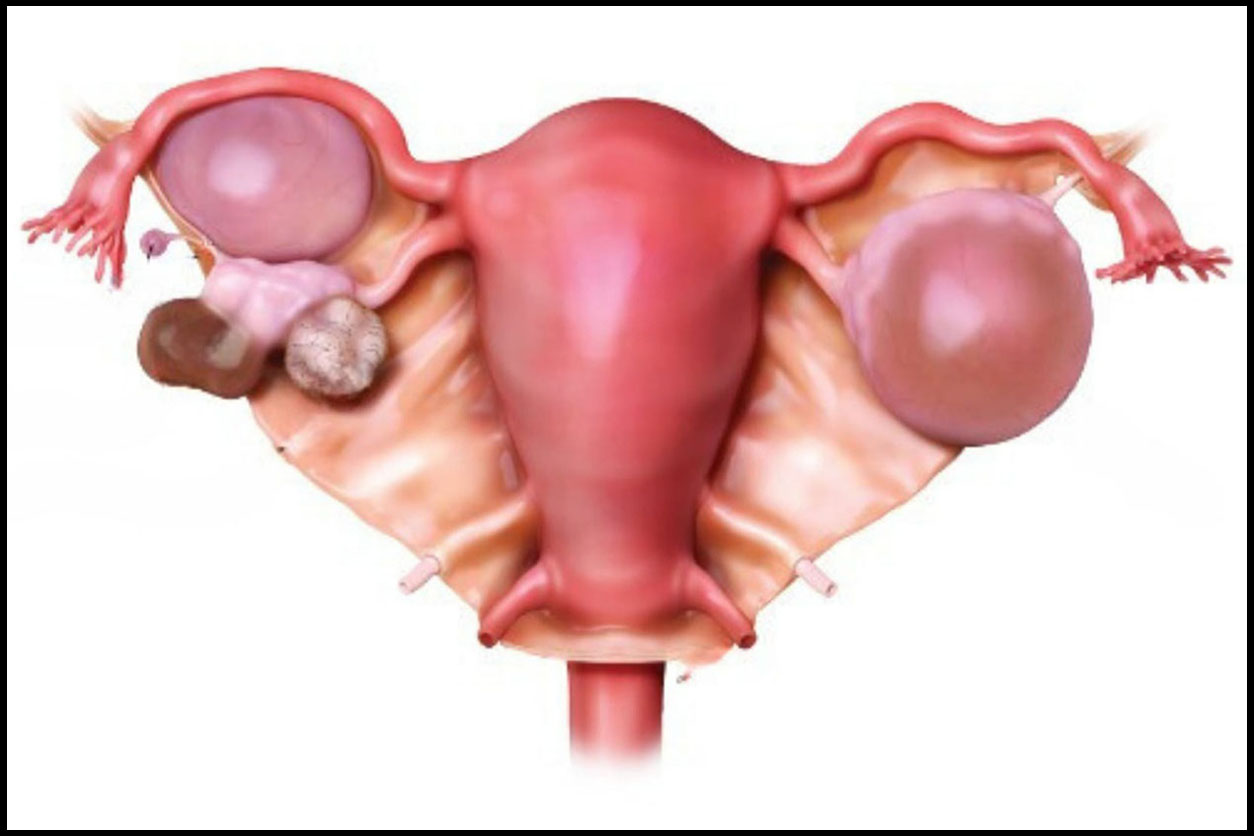Ovarian Cysts in Women are divided into two categories: benign and malignant. The types of ovarian cysts, cancer risks, and treatment options can vary depending on whether they occur during adolescence, reproductive age, or menopause.
Ovarian cysts generally appear without symptoms. When symptoms occur, they may cause discomfort such as bloating or indigestion. Ovarian cysts that naturally appear during ovulation or the menstrual cycle, which generally regress and are benign, are called ‘functional cysts’. Follicular cysts, which occur due to the failure of ovulation, leading to fluid accumulation inside, can range in size from 3 to 10 cm and may appear in multiples. These cysts fall under the same category. If the ultrasound images are clear, consisting of fluid contents, and without cauliflower-like protrusions, it indicates a benign functional cyst. In such cases, instead of opting for surgery, doctors may prefer monitoring in subsequent menstrual cycles, and medications may be prescribed.
The primary diagnostic tool is physical examination. During this examination, the abdomen is palpated by a specialist to detect any areas of pain. Following this, the most important imaging tool is ultrasound. In ultrasound, the size, appearance, and structure of the cysts are evaluated by the specialist. In necessary cases, blood tests called tumor markers may be performed or an MRI may be used for further assessment. However, an MRI is not requested for every cyst, and it is only ordered when the doctor deems it necessary or when further evaluation is needed.
What Are Ovarian Cysts?
The frequency of ovarian cysts can vary according to age groups. Different types of cysts can be encountered during adolescence, reproductive age, or menopause. Ovarian cysts seen in these age groups are as follows:
Follicular Cyst: This cyst occurs when the egg does not rupture as it should, and the egg continues to grow. Common in younger women, follicular cysts are typically 2-4 cm in size and usually disappear after the menstrual period.
Corpus Luteum Cyst: This cyst originates from the structure where the egg matures and is released. It forms from cells that can secrete progesterone. Normally, after the egg is released during the menstrual cycle, the corpus luteum breaks down. If it does not, fluid accumulates, forming corpus luteum cysts that can reach sizes of 3-5 cm. Since these cysts produce hormones, they may cause menstrual irregularities.
Chocolate Cysts (Endometriomas): Commonly referred to as "chocolate cysts" due to their appearance resembling melted chocolate, these cysts are the ovarian form of endometriosis. Chocolate cysts are common, affecting about 1 in 10 women of reproductive age. When it comes to surgery, a more selective approach is taken, as most patients may want to conceive. Therefore, immediate surgery is not always recommended for chocolate cysts. However, if the cyst is large (9-10 cm) or causes significant pain, surgery might be required. If the cyst is smaller (e.g., 5 cm), without irregularities on ultrasound and with a homogeneous appearance, it may just be monitored. These cysts can recur even after successful surgery, and sometimes surgery can impact ovarian reserve. Therefore, when possible, the cyst may be monitored through ultrasound, especially if the patient desires or plans for pregnancy, and surgery may be avoided.






